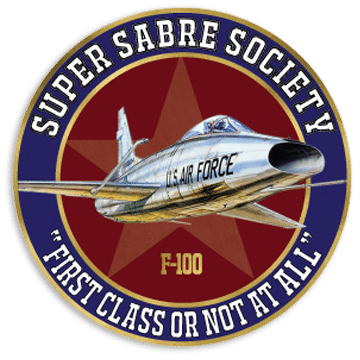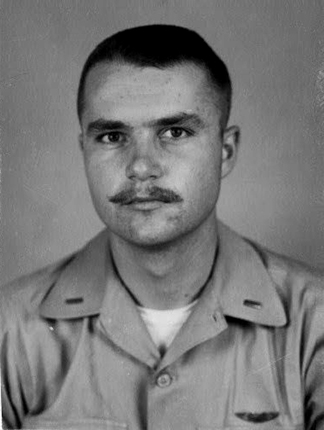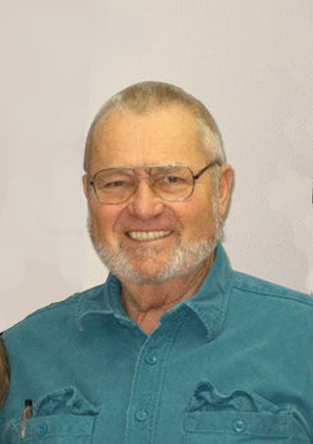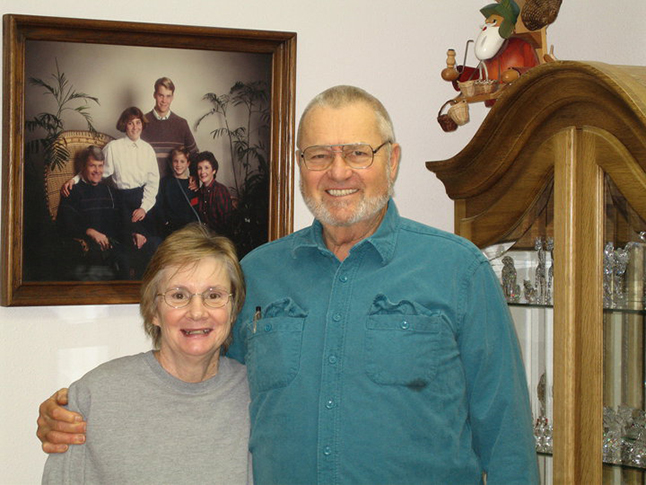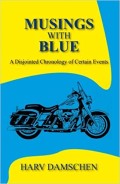Harv Damschen is a retired fighter pilot whose occupation, by its very nature, has had to confront reality on its own terms. Fantasy has never won an aerial engagement, repaired a disintegrating engine, or deflected AAA (Anti-Aircraft Artillery), although there are some who, after the fact, would ascribe their unexpected survival to some sort of supernatural influence rather than consummate skill or merely luck. (from About the Author – book sites)
In his own words…Mid-Air Collisions
I may be the only guy (or one of the few) to have two (count ‘em…two) mid-air collisions in pilot training and still complete the program. These occurred in late summer/early fall, 1957, at Greenville AFB, Mississippi.
The first was fairly uneventful on the first (or maybe second) solo formation ride in the T-33. I was tucked in there like a Thunderbird on the left wing of the IP’s (Instructor Pilot) aircraft feeling smug and all grown-up when we had a momentary bump from turbulence, possibly jet wash, and the mission continued. During the de-briefing, some maintenance guys walked in and huddled with the squadron commander (a captain) who then summoned my IP from the table to join the huddle. Turns out I had bent the left horizontal stabilizer of the IP’s aircraft up a few degrees with my right drop tank. My IP, Lt. Fischer, a lawyer from Baltimore, dropped a few accolades on my behalf and that, amazingly enough, was pretty much the end of the incident.
The second was more serious and occurred during my night dual check-out. Greenville AFB had an unusual night recovery procedure for night training. There was a left descending, circling let-down over the field for a left turn onto initial approach. During the let-down, there was a sudden violent jolt and a bunch of warning lights came on in the cockpit. I was looking left over the wing during the descending left turn and almost immediately there was a fireball on the ground. When I looked out over the right wing, the drop tank and about three feet of the wing was missing, and fuel was streaming out of the jagged end. At that point, the IP took control from the rear cockpit and I was then only along for the ride.
We went out over the swamps and checked aircraft control at progressively lower airspeeds and discovered that our final approach speed would have to be 130 to 140 knots, mighty hot for a T-Bird. I can’t heap enough praise on the IP for his skill…and he did it all from the rear chair. We were fast and he spiked it onto the runway which, of course, caused a series of “porpoises” catapulting us back into the air, each causing the aircraft to roll into the shortened wing with little control to stop it. We finally got all three wheels on the ground and tore into the MA-1A barrier going like a “striped-assed ape”, probably well above the design limits of the barrier. Yay, barrier!
What happened? Well, the squadron commander was checking out a newbie IP on the local area and wandered into the recovery pattern. We locked wings with a head-on impact which took off a chunk of my right wing and all of his. The newbie (front seat) went in with the aircraft, but the squadron commander ejected, swung once, and landed just outside the fireball. As rumor had it, the squadron commander was an emergency procedures fanatic and was frequently seen going through the ejection motions every flight before he took the active. Now that’s a narrow squeak.
The epilogue was somewhat strange and a bit funny in a macabre sort of way. I was yanked off the flying schedule and had to visit the base psychologist who asked me (in soothing, somber tones) if I was distressed over the incident or apprehensive in any way. I said, “Well…no.”, whereupon he rephrased the question several more times over the course of an hour to which I gave him the same answer. I was then sent back to the squadron. Lo and behold, I was back in the psychologist’s office the following day playing the same question and answer game. I think he expected me to break down and sob or something. But, hey! I was 21 years old, immortal, and flying single-engine jets. Young and stupid carried the day. On reflection, though, I’ve had several hairy instances over the course of my career when I should maybe have pulled the handles but didn’t. So, maybe young and stupid slowly morphed into old and stupid.
First Assignment – ACM 101
My first assignment as a bonafide fighter pilot was as a newly minted second lieutenant to an F-84F squadron at Shepherd’s Grove, England with several other “brown bars”. Unfortunately, the unit was scheduled to convert to the F-101A (yeah, they really used to drop bombs and shoot with the “A” model Voodoo) and we lowly “newbies” didn’t have the total flying time (750 hours) to make the transition. So…much to our disappointment, we were reassigned elsewhere, a couple of us going to the 7272nd Wing at Wheelus AB, Tripoli, Libya. This turned out to be the pot of gold at the end of the pilot training rainbow.
The 7272nd operated B-57s, F-100Cs, T-33s, and H-21s, and the mission was to support rotational units from Europe. The B-57 towed banner targets for radar intercepts and the F-100 and T-Birds towed for the fast movers with a gun. Secondarily, we provided range officers for El Uotia gunnery range.
The main effort was to chase the rotational F-86D intercept aircraft using the F-100 and T-Bird while they fired 2.75 rockets at the banner on sequential passes. Why the chase? For two main reasons: 1) They were “under the hood” on instruments during the firing pass so we acted as safety observers so they didn’t either shoot-down the tow ship, or 2) didn’t recognize the “eight ball” display on the scope indicating a collision course to the banner.
Scary? Well, yeah. I have stories, most of which are true. The “pot of gold”? Oodles of flying time in the F-100 and T-33, good weather, raising hell at the Wheelus O’Club, “blab” parties on the beach, and plenty of cross-countries north to civilization in Europe and England. Nirvana!
That’s the intro…here’s the tale. The icing on the cake was that after the chase mission there was generally enough fuel remaining to rat-race a bit on the way back to the base. After a hundred hours or so in the F-100C, I deemed myself the ultimate distillation of fighter pilot skills. But wait…wait…there was a first lieutenant in the squadron when I got there who was rumored to have “golden hands”.
One day he and I were chasing “Doggies” on the same mission and decided to tangle a bit on the way home. The engagement started at about 25,000 feet and was intensely fought to a stalemate. “Wanna’ go again?” he asked, and I said “You bet!” so we did the 45-degree split thing and turned back into the engagement. This time I almost had a piece of him. “Again?” he asked, and I answered, “Damn right!” This resulted in a low-speed scissors (which, as “Hun” drivers know, can be dicey) and placed me slightly high and offset at his six. “Hah!” I thought, “He’s gonna star in my gun camera film” and I maneuvered to put the pipper on, unfortunately using too much aileron and not enough rudder.
Adverse yaw immediately bit me in the ass and the next thing I see are large Mediterranean waves; only they weren’t large…I was just low, pretty much out of airspeed, and my clue bucket largely depleted. Rudder to the rescue and I rolled level but still slow and descending. Thought about lighting the burner but if it didn’t light, or if the engine compressor-stalled (an endearing trait of the “Hun” at high angles of attack), I was going to go boating. So I gingerly raised the nose, the throttle fortunately already at full mil power, slowly stopped the descent and began to accelerate. End of the hairy part.
Epilogue:
During the ride from the flight line back into Ops with my adversary (a really nice guy, by the way), I said, “Boy! We were pretty low on that last one!” His reply? “Yeah, you dumb shit; I was watching to see if you were gonna do that! You were throwing up a cockscomb of water. I thought you were going in.” Well, maybe he wasn’t such a nice guy.
The Lessons: 1) Don’t rat-race over water…or, if you do, 2) Don’t do it with your head up your ass, and 3) Heed that old biblical caution: “Maintain thy airspeed ‘lest the ground rise up and smite thee”.
Harv retired with 8270.1 hours flight time, 5011.8 of which were in the “Hun”.
